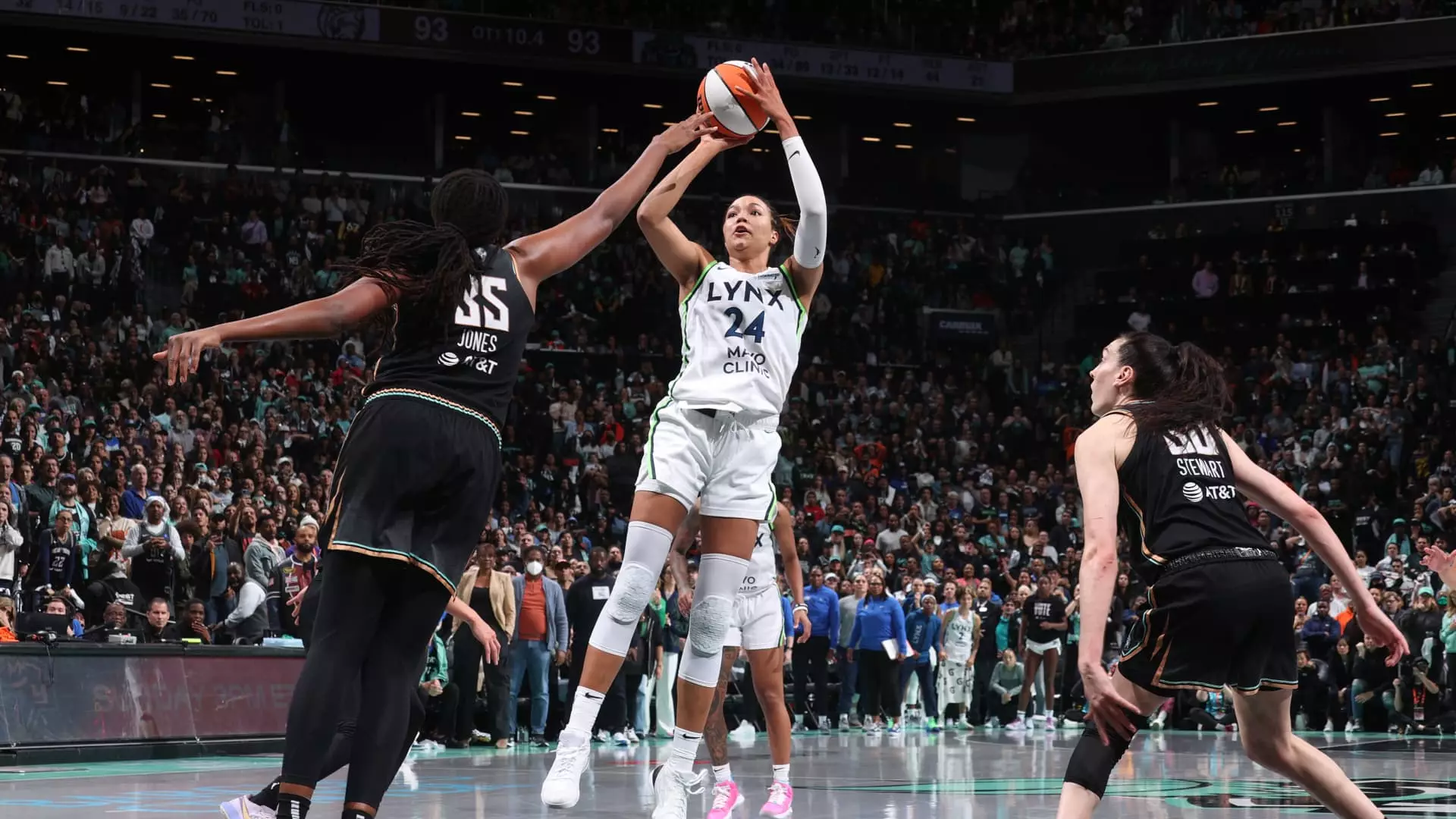The Women’s National Basketball Association (WNBA) is about to venture into a transformative era, marked by significant changes that will provide fans with greater access to the thrilling world of women’s basketball. Commissioner Cathy Engelbert recently announced that the upcoming 2025 season will witness the league’s regular season expanding from 40 to 44 games. In addition, the Finals series will be elevated from a five-game showdown to a best-of-seven series. This progressive shift is set to enhance the overall experience for basketball enthusiasts, who will now have increased opportunities to witness high-caliber performances from their favorite players.
These changes arrive as the league acknowledges its growing popularity and the rising demands of its fanbase. Engelbert clarified during a recent press conference that adjustments to the playoff format and season length were prompted not only by the challenges posed during the COVID-19 pandemic but also significantly fueled by the league’s burgeoning success and the introduction of charter flights for team travel. The integration of these flights has facilitated a more streamlined experience for players and teams, emphasizing player well-being while at the same time catering to fans looking for more engaging content from the league.
The WNBA will also welcome fresh talent and rivalries as it introduces the Golden State Valkyries as its 13th franchise in 2025. Plans for two additional teams, one in Toronto and one in Portland, have already been laid out for the 2026 season. This expansion is a pivotal step in the league’s strategic growth plan, as it not only diversifies the competition but also enhances regional representation, ultimately making the league more appealing to a broader audience. By fostering interest in cities not previously aligned with WNBA franchises, the league is cashing in on potentially lucrative markets that can feed the cycle of investment and growth in women’s sports.
Engelbert’s discussion of potential future cities alongside the announcement of the new teams highlights the WNBA’s commitment to building a culturally and geographically inclusive landscape, ensuring that the league reflects the diversity of its players and fans.
As the WNBA adapts to the evolving landscape of sports media, its recent $2.2 billion media rights deal spanning 11 seasons underscores the league’s allure for investors and partners alike. This contract—the product of negotiations intertwined with the NBA’s expansive media agreements—indicates the economic viability of women’s sports as audiences continue to swell in size. Increasing viewership, attendance rates, and fan engagement signal a robust trajectory that merges entertainment and athletics.
Factors contributing to this rise include the influx of captivating talent, such as Caitlin Clark and Angel Reese, alongside established stars like Breanna Stewart and A’ja Wilson, who have demonstrated extraordinary skill and poise on the court. The infusion of such talent has not only heightened competitive balance but also created storylines that keep fans enthralled throughout the season.
However, the WNBA’s journey toward success has not come without challenges. Reports of racism and online harassment faced by players highlight the disparities that women in sports still confront. While Engelbert has addressed these issues, her responses have incited criticism, suggesting that while conversations about equity and inclusivity are growing, they still require substantial improvement to ensure that player voices are both heard and validated.
The need for a more robust, supportive framework for athletes in the league speaks to a larger societal issue that women’s sports must confront. By actively engaging with concerns raised by players, the WNBA can cultivate an environment that champions not only athletic excellence but also the well-being and dignity of its participants.
As the Minnesota Lynx face off against the New York Liberty in the current Finals series, the excitement surrounding the WNBA is palpable. Both the Lynx and Liberty represent the burgeoning talent and competitive spirit that embody the league’s ethos. With victory margins becoming narrower and the stakes higher, the league is poised to attract not just loyal fans but also those new to the sport.
The WNBA is on the cusp of an exciting transformation marked by expansion, heightened competition, and efforts to tackle social issues head-on. Embracing change while remaining aware of the obstacles ahead is essential for fostering a deeper connection with fans and empowering the next generation of players. The future is bright for the WNBA, filled with potential and opportunity that promises to enrich women’s basketball for years to come.

